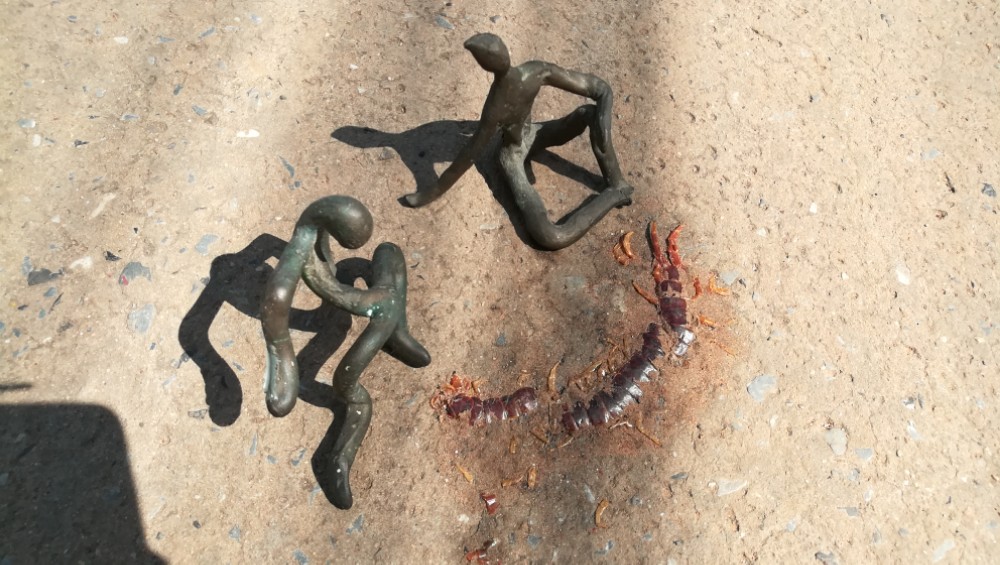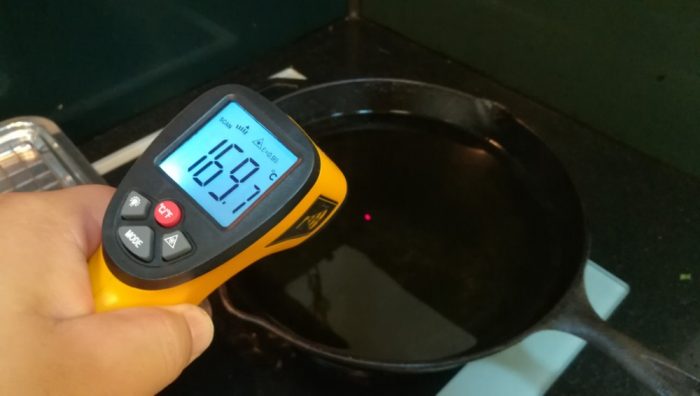Family bike trip lol.
Month: September 2017
Day of Grub
It all started out with French toast and banana milkshakes for breakfast, and continued into lunch at our friend’s nearby restaurant where the kids had noodles and fried rice, and we had various curries and braised meats.
We made oatmeal chocolate chip cookies with walnuts in the late afternoon, then I went to my Turkish pal’s house to get continued instruction on various salads, sauces, and kebab. I took a big bag of food home and the kids chowed down. Tomorrow is school for them, so the sad silence before bed has begun.
Bonus Kebab Assembly Vids:
Costco Onion Banchan Documentary
How the heck did I miss this until now?
Kinda like the best documentary ever, using the oldest pawn shop equipment available. Awesome.
This is the reddit page my mom thoughtfully sent me: Costco Kimchi
I’m sure Kevin must have mentioned it at some point, but I’d never heard of this practice until today.
Finnish Polka Idoru – A Video Chronology of Loituma (from 17th Century Scandinavia to Modern Day Japan)
Disclaimer: The following is an approximate timeline; mistakes are inevitable. This is more of a way for me to record a collection of nodal points in case I want to revisit them in the future.
Methodology: YouTube embeds with sparse linkage to other sites. Why YouTube only? I’m inclined to track views on the embedded videos as well, because I have a hunch that they tie into something larger than Japanese Anime-Finnish Polka synergy.
1. In the Beginning, there was Stiff Bread
Finnish quartet Loituma releases “Ievan Polkka” (Eva’s Polka) in 1996. They seem to be as popular and relevant as you would expect a Finnish quartet to be at any time in human history. This sure is a catchy rendition of the song, though, which has murky (perhaps 17th century) but certainly ancient folk music roots, got very popular after WWII for a while, was forgotten for a couple decades, then became the most famous Finnish song in the world, in some form or another. This version is what started the whole resurgence:
Loituma members compose or arrange the tunes themselves, but often use improvisation. Lyrics come from many sources, including two main traditional sources: the Kalevala, the national epic of Finland; and the Kanteletar (source).
Many people refer to the lyrics of this song and the subsequent ones listed below as “scat,” which is an instantly understandable term even though the common definition is “improvised jazz singing in which the voice is used in imitation of an instrument.” From the song’s Wikipedia entry:
The song is sung in very heavy Eastern Savonian dialects spoken in North Karelia. It is fully understandable to speakers of standard Finnish.
2. The Orihime Catalyst
Orihime Inoue is a female character from the famous manga/anime series, Bleach. That’s as deep as I want to go into that, partially because even saying that word makes me wonder if I’ll ever hear an album as good as Nirvana Unplugged in New York again in my life.
In the spring of 2006, a Flash animation consisting of a few Orihime anime frames (with her holding a leek/spring onion) combined with audio from the scat section of Ievan Polkka was uploaded to Russian LiveJournal and went viral:
Leekspin AKA Loituma Girl was born. A tidal wave of covers, remixes, outright thievery, commercial usage, European ringtones, and sometimes imaginative derivatives would follow. A pretty good listing of these is here.
3. Loituma Sells Out
In 2007, Loituma capitalized on their winnings from the intarwebs polka scat lottery. Like, big time. In Europe, their song was used as a ringtone by major telecoms (remember paid ringtones?) and called Holly Dolly:
They also sold out to a Dutch Energy Company and let the corporate monkeys beatbox all over the track:
But the most heinous crime against their own song was undoubtedly this, from 2007:
This seems as good a place as any to mention the existence of a Hitler-parody version of this song on YouTube which is slightly amusing (because Hitler was a whiny bitch, haha) and has been ganked many, many times by different uploaders there over the years (I counted at least 10 instances of the same jacked-with-Chinese-subs vid), but that I won’t post here because, well, fuck him.
From this point on, we never really see the band Loituma again except in historical accounts because:
- Finnish
- Polka
- Quartet
4. Enter the Nippon
In this section, I will attempt to briefly explain how Ievan Polkka became an icon of Japanese culture (at first, online only) and how it remains relevant in modern day Japan. The key word in the previous sentence is “briefly,” because we are in otaku territory here, and just want to see the scenery whizzing by as we pass through.
As Loituma was selling out in Europe, shit was getting real for their song in Japan. As predicted by the great visionary William Gibson, the way was being paved for virtual idoru (idol) / human interaction. Ievan Polka parodies, reworks, and derivative media was being shared on Japanese boards like 2chan and video sharing sites like NicoNico Douga in huge numbers.
Enter Vocaloid. Vocaloid was a voice synthesis technology and software partially backed by Yamaha. In August of 2007, they released “Hatsune Miku CV01 Vocaloid2.” Miku was advertised as a “Virtual Pop Star” instead of just a vocal synthesizer, using the sweet voice and cute character as major hooks. The software was tuned to create J-pop songs, but creating songs from other genres was possible (source).
This was created with Hatsune Miku and uploaded to Niconico Douga:
This single creation spawned thousands of derivative or related works on Niconico Douga alone, and from 2008, crossed over to YouTube and other western video sharing sites.
An interesting thing to note is that the character in the video above is actually fan art based on the official character, Hatsune Miku. The fan art character was named “Hachune Miku” and became the first fan art officially recognized by her corporate overlords, Crypton Future Media (seriously!). If you’re interested in reading about Miku’s more recent accomplishments (working with Pharrell and Lady Gaga!), check out this article from 2016: Meet Hatsune Miku, the Japanese Pop Star Hologram

You should scan through one of her concerts in HD, just to see how many people will go see a hologram that isn’t Tupac. The technology gets better every year, but here’s a good one from last year: Magical Mirai 2016
So what’s been happening lately with the song?
Well, the corporate Vevo overlords released (re-released?) an official video for it in 2015.
And the possibly most annoying version ever was released the same year, a nightstep (dubstep + nightcore) version (seriously, don’t click this unless you like 120bpm Minecraft video music):
In March of this year (2017), a young member from a Japanese idol girl group, Erika Ikuta, took the song back to its roots.
Oh, the irony… An actual idoru in TV reality following the work of a virtual idoru in the real world by restoring the human touches the song lost while in the ether!
And finally, do these jingles for a Japanese real estate company sound familiar?
Research Note: Sans Serif lower case L vs Capital i (l vs. I)
“Ievan Polkka” is often misspelled with an “L” in place of the leading “I” presumably because of the similarity between these two letters in an (often displayed by default) sans serif font. Therefore, Googling for “Levan Polkka” returns completely different results, some of which are real gems:
Other popular misspellings/variations include “Ievas Polkka,” “Leekgirl Song,” and “Leekspin Song.”
As an added bonus, I think this Finnish folk metal band really took the song back home in style:
Or maybe this song now belongs to the whole world:
NO MIKUS WERE HARMED IN THE WRITING OF THIS BLOGPOST.
Max and Mina’s Fish and Chips
Uncle Andreas got us a bottle of malt vinegar, so we decided to make beer batter and fry up some fish. Unfortunately, the local Makro didn’t have much of a fish selection, so we settled on (ahem!) Issan cod.
Max and Mina did most of the prep, and I was on fry duty.
Today’s cooking vocabulary included: Deboning, scaling, pin bones, fins, gills, gutting, ounces, even spoonful, heaping spoonful, all purpose flour, sodium bicarbonate, sifting, dredging, frying oil, and fire extinguisher.
#cookingwithglenmo
#culinarylinguistics
Triumph Motorcycles Production in Thailand
Triumph is alive and thriving in Thailand (300 units/week):
OK, but why did they ever go to Thailand in the first place?
“It was primarily for us to be able to do certain processes that we wouldn’t be able to do in the UK… So, every company has had to make a choice, in terms of where it’s going to source its components from globally. And some companies are comfortable with saying, “OK, I’m going to go and work with a supplier in China, or – I’m going to buy my complete engines (in some cases) from a different company”. That’s never been Triumph’s way of doing business. John Bloor has always taken a viewpoint that we want to be in control of the things that we believe are important, in order to get the quality of the product right, and to be in charge of the supply chain.
I’ve never been to a motorcycle factory here, but I’ve been to automotive component factories on industrial estates in Chonburi and the production lines managed by major Japanese companies are almost on the same level as ones in Japan.
Thai workers can be trained to do work every bit as well as their Japanese counterparts, this I have seen. I’ve spoken with factory managers, floor supervisors, and line leaders as well, and the consensus is that clear instructions and objectives are what determines good product build specifically here in Thailand. Whereas Japanese workers might take it upon themselves to point out problems or suggestions as part of their constant improvement process, a Thai worker is more likely to express pride in their work by doing exactly what they’re told.
Unsurprisingly, this probably mirrors the evolution of the Japanese line worker as well. Not all Japanese production lines or systems are created equal, and I’ve seen employees discouraged from adding any input during production meetings, and simply told to shut up when being vocal about bad parts or processes. The thing is, this used to be the norm… Now, it’s probably the mark of a company that isn’t going to make it. Every takeover I’ve ever seen (and I’ve seen a few) has involved a shakeup of production systems, because everyone wants to force their own culture on the new fish in the pond. The thing is, going through every one of those instances in my mind now, I’ve never seen the production line workers being told to communicate line problems less, only more.
The other thing is, I’ve often been told by Japanese supervisors sent overseas (overwhelmingly in Asia) that the local workers act like Japanese workers used to act decades ago – with no voice and just doing what they’re told (which inept supervisors liked and smart supervisors realized was not sustainable).
































